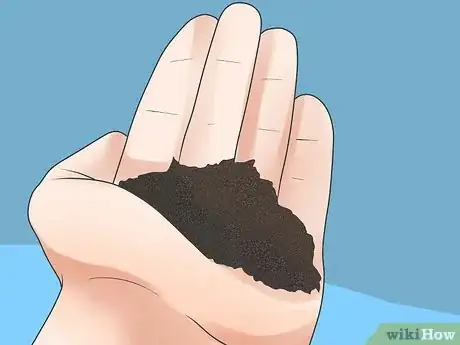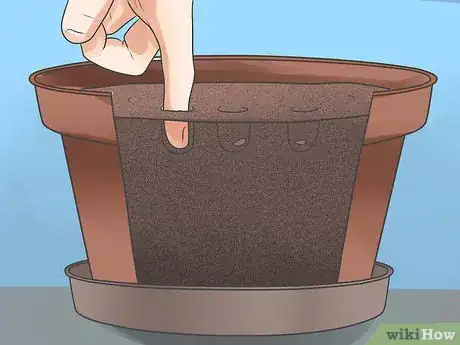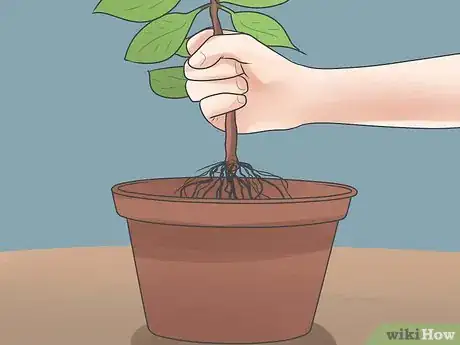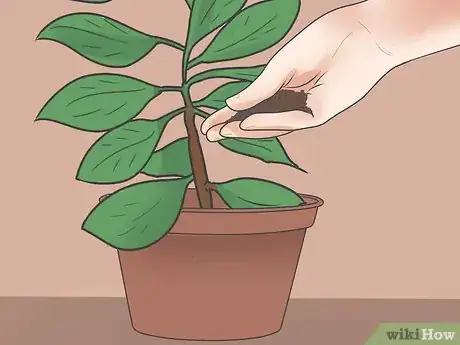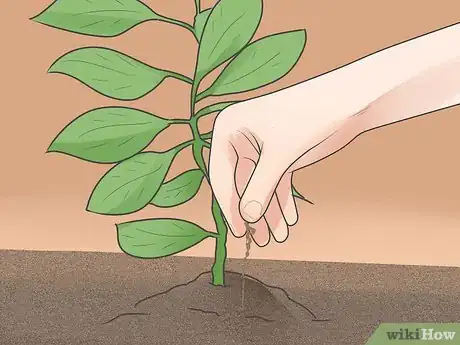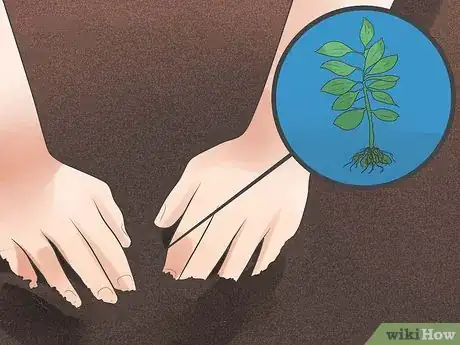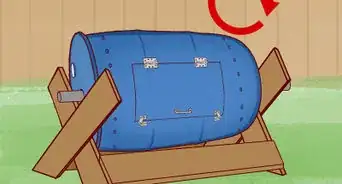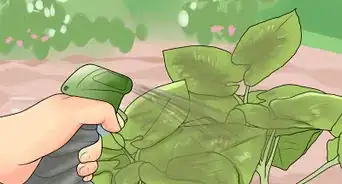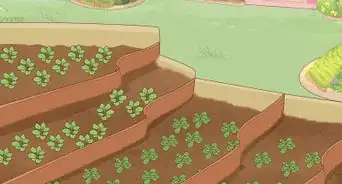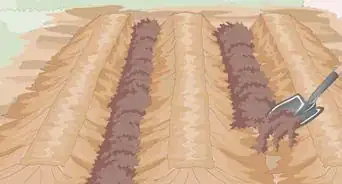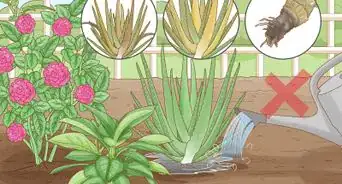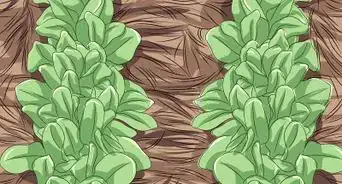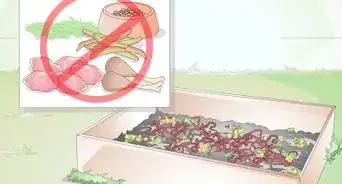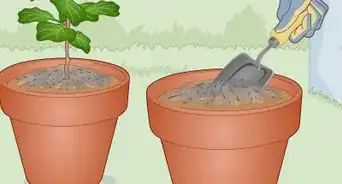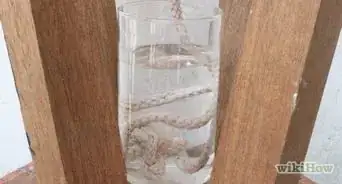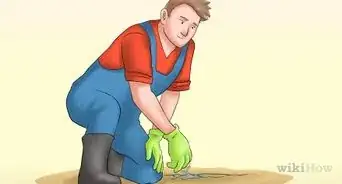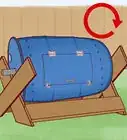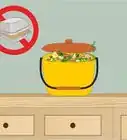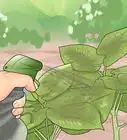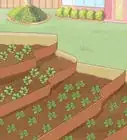This article was co-authored by Grant Wallace. Grant Wallace is a Landscaper and Owner of Grantlanta Lawn in Atlanta, Georgia. With over seven years of experience, he specializes in lawn maintenance and landscape installation. In 2012, he earned his BA from the University of West Georgia. Grant has been profiled in Shoutout Atlanta, Canvas Rebel, and Voyage ATL.
wikiHow marks an article as reader-approved once it receives enough positive feedback. In this case, several readers have written to tell us that this article was helpful to them, earning it our reader-approved status.
This article has been viewed 168,162 times.
Once you've made your compost, what do you do with it? It’s a beautiful transformation when those old, fungus-ridden vegetable peels, leaves, and grass clippings become a dark, nutritious, earthy compost. The beauty is in compost’s function. Here are some simple ways to use your compost. Enjoy!
Steps
-
1Know when your compost is ready. As long as you maintain the pile weekly, it should be clear when it’s ready. It's ready when it is:[1]
- dark brown or black
- soft
- crumbly
- mostly smooth (you can throw that stubborn corncob back in the pile)
- earthy-smelling
-
2Plant seeds. Make a potting mixture of 1 part compost to 3 parts soil and put in pots, about an inch / 2.5 centimeter (1.0 in) short of the brim. Plant your seeds in these pots just as you would any other soil.Advertisement
-
3Plant seedlings. Plants that already have roots can handle more compost, so your potting mixture for seedlings or transplanting plants can be 1 part compost to 2 parts soil.[2]
-
4Nourish established houseplants. If your potted plants (or flowers, herbs, vegetables) are already growing, use the compost with nothing added and sprinkle on the surface of the dirt. (If you don’t have room, you can shovel out a layer of the dirt that’s already in the pot and replace it with the compost).[3]
-
5Spread it on your garden. Use finished compost in a layer on top of your soil to nourish the plants underneath. Water will carry nutrients down, into the soil. This is called top-dressing. You can top-dress a garden, a tree, even a lawn (just sprinkle it in).
- Compost also makes an excellent layer in any no-dig garden. In this kind of a use, especially in a raised bed, you can make the layer as thick as you like.
-
6Dig it into garden beds. As you dig garden beds, add as much compost as you like and mix it with the soil as you put it back. It's a great amendment for both sandy and clay soils.[4]
-
7Plant directly in it. If you have ever had a tomato or pumpkin seed volunteer in a compost pile, you will know that some plants don't mind growing directly in compost. It can be a little strong for others, and carbon (brown stuff) that is still decomposing can rob plants of nitrogen, but if you have a few extra vegetable seeds, see if any of them would be happy directly in your finished compost pile. You can spread the compost out a bit first or move it to another spot, if you prefer.
Community Q&A
-
QuestionCan I use this to grow lawn seeds that I've planted?
 DonaganTop AnswererYes. Cover the seed with a fine layer of compost, and keep it damp.
DonaganTop AnswererYes. Cover the seed with a fine layer of compost, and keep it damp. -
QuestionHow is compost used?
 StaubinnCommunity AnswerYou use compost to improve your soil and replace lost nutrients. It also improves the texture of your soil.
StaubinnCommunity AnswerYou use compost to improve your soil and replace lost nutrients. It also improves the texture of your soil. -
QuestionIs it safe to put compost on spinach, lettuce, and other leafy vegetables? I'm just concerned since compost are made from manures, and spinach and lettuce leaves will be eaten.
 Adele OrrTop AnswererAs long as you only use manure from herbivorous animals (cows, horses, rabbits, chickens, ducks, etc.), then you can put it on edible plants. The composting process removes dangerous pathogens, leaving only the beneficial nutrients.
Adele OrrTop AnswererAs long as you only use manure from herbivorous animals (cows, horses, rabbits, chickens, ducks, etc.), then you can put it on edible plants. The composting process removes dangerous pathogens, leaving only the beneficial nutrients.
Things You'll Need
- Compost
- Plants
References
- ↑ https://compostguide.com/using-compost/
- ↑ http://www.stopwaste.org/at-home/home-gardening/build-healthy-soil-with-compost/using-compost
- ↑ http://www.stopwaste.org/at-home/home-gardening/build-healthy-soil-with-compost/using-compost
- ↑ https://www.compostinstructions.com/how-to-use-compost-in-your-yard-and-garden/
